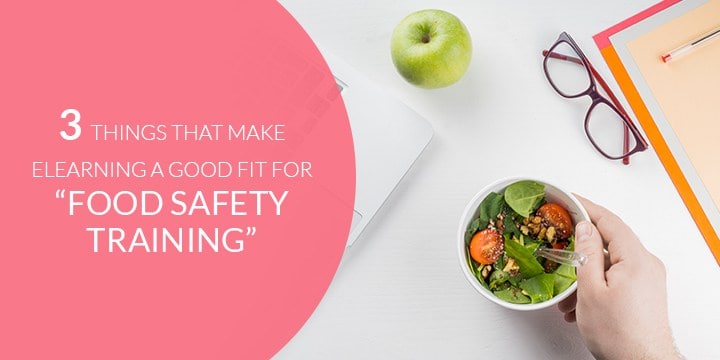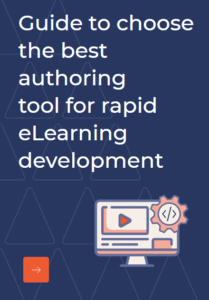Did you know? “An estimated 600 million – almost 1 in 10 people in the world – fall ill after eating contaminated food and 420 000 die every year, resulting in the loss of 33 million healthy life years (Source: WHO )”. Alarming numbers considering the fact that food is a basic necessity, and hence its hygiene and safety too. The food industry is vast and ever expanding with new products being added each day. The packaging norms, shelf life, the regulatory norms and hygiene practices all comes as a part of the Food safety training.
For something that requires much care and precaution, training tends to be a crucial aspect. Traditional training methods however are often time consuming and resource intensive too, not to forget the cost behind training schedules, training space and such. So, what makes eLearning a good fit for Food Safety training?
- Just in Time
One of the greatest advantage of eLearning is the speed of delivery and convenience. Food safety trainings may be long in terms of content but with eLearning, it can be broken and chunked down into smaller nuggets that can be delivered as well as comprehended easily. Organizations have also observed that the overall time for training decreases when eLearning is used instead of classroom training. Not just that, the flexibility that eLearning offers promotes utilization of downtime for learning (mobile learning, microlearning etc.), allows learners to learn in their own pace hence, driving self-paced learning that is often retained for longer time. - Outreach
A single source course that can be delivered to food safety personnel wherever they are, on the devices of their choice. This is what eLearning offers. Unlike traditional training, that requires a physical location, instructor, a fixed schedule etc. for conducting official training, eLearning can happen anywhere, at any time, and in multiple languages hence breaking the boundaries set by different geographical locations, languages, culture etc. Learning/training now happens anywhere where the learner is, on the connected device available (or as offline downloads too). - Reliability
In the food industry the trainers often are efficient in their own skill sets like cooking, serving, assisting etc. however, that doesn’t make them good at actual training. Very often there tends to be inconsistency in subsequent trainings too. This creates an unequal opportunity for trainees or learners and impacts the effectiveness of training too. eLearning on the other hand nullifies this issue by delivering standard and personalized learning to learners on the basis of the learning requirements. It ensures the coverage of essential content and maintains consistent delivery standards too.Not just that, eLearning also helps in instant evaluation, starting from right after completion of the course and then frequently following it up with evaluations/assessments, tracking the progress, suggesting courses to fill the skill gaps and most importantly allowing the learners to explore new information/learning at their own pace.eLearning is also a perfect solution for on-the-job trainings in the food safety industry, hence greatly decreasing the margin of error. As the food safety norms are constantly updated, the use of eLearning ensures that the updated information is delivered promptly too. Also, as most food safety trainings are revised each year, the rescheduling, reassigning etc. too can be automated using learning management systems, hence setting a clear pace for learning and staying up-to-date. At Knowzies we have helped many Food and Safety organizations to create the eLearning on some important compliances like HACCP, Personal Hygiene, Sanitation, GMP, Food Handling, etc.If you are wondering how to introduce eLearning in Food safety training? Drop us a message at info@www.knowzies.com , and our team will be quick to assist.



